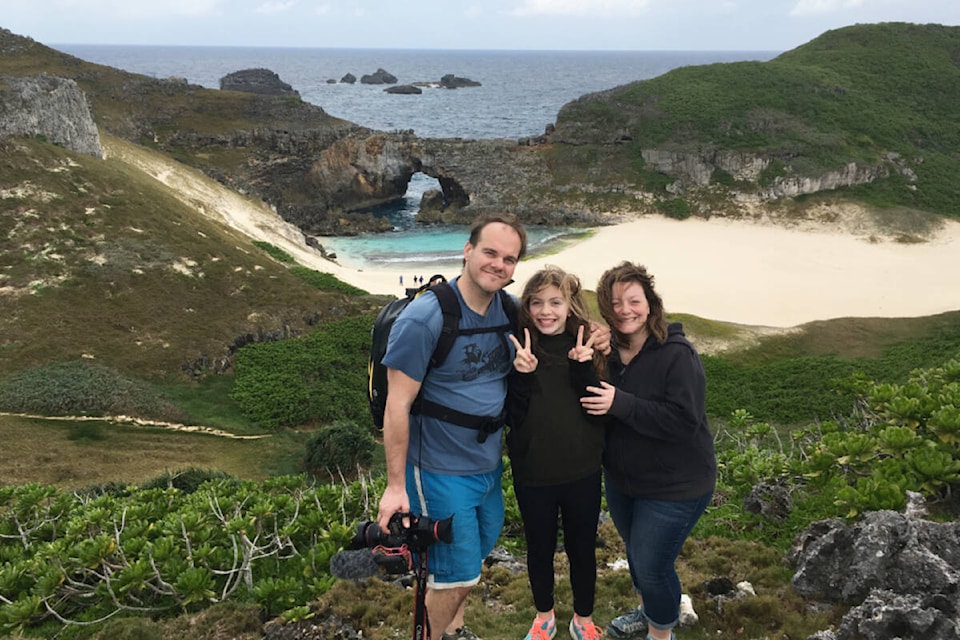A Gabriola family that travelled to five continents and 20 natural world heritage sites discovered that words Canadians use to describe natural environments often have no translation or even comparable concepts within other cultures.
Phillip Vannini, his wife April and their daughter Autumn set out together to come to terms with the concepts of ‘wilderness’ and ‘wild.’
What they discovered is those words stem from a colonialist world perspective and have no equivalent in some cultures, even within North America and Europe.
The book, In the Name of Wild: One Family, Five Years, Ten Countries, and a New Vision of Wildness was published by UBC’s On Point Press and launched Oct. 15 with an accompanying film of the same title. The book and film are part travelogue and part ethnography that resulted from the Vanninis’ journeys in Australia, Asia, Europe, Central and South America and North America between 2014-2020.
Phillip Vannini is an ethnographer, filmmaker and author, and April is a researcher who primarily focuses on critical communication studies, contemporary cultural studies, and cultural theory and philosophy. Both are professors with Royal Roads University in Victoria. Autumn is a Grade 12 student at Nanaimo District Secondary School.
“Even though April and I are academics, this is not an academic book. This is a book for the general readership, for general audiences … We wanted to write a book and make a film that would be of interest to a general public, literally around the world, because the project touches on so many different countries…” Phillip said. “The book is two genres – a travelogue and ethnography, but the ethnography part is the meeting of people and reflecting of what we learned along the way.”
The family happened upon the idea for the project in 2013 while in Costa Rica where they wanted to see the wildlife and were at the gates of a park, waiting for it to open.
“We were with a long line of people waiting for the gates to open and, because the park knew that these lineups formed, they hired troupes of clowns and entertainers who entertained us while we waited,” Phillip said. “The whole experience, from waiting outside the gates, going inside the gates and lining up to take pictures of sloths, it felt like … the most un-Canadian way of experiencing nature. It led me and April to start talking about how different interactions with nature are across the world. Of course, that conversation led to us asking ourselves, what does ‘wild’ mean to different people around the world? What is wild nature to someone, say, from Japan, rather than someone from Canada?”
What the Vanninis discovered was the North American concept of ‘wild’ has no real equivalent in other cultures, such as among Canada’s First Nations, who populated and were completely integrated with the environments in which they they lived prior to the arrival of Europeans. For First Nations people – removed from lands that in some cases were later converted into national parks now devoid of human presence and influences that had been integral components of a natural order that existed for thousands of years – there was no ‘wild.’
“We spoke to First Nations and they said, ‘wild is what the white men brought’…” Phillip said. “The more people we spoke [with], the more we uncovered about what this word reveals, but [also] what it hides. In the book we learn, essentially, what else it can mean and if we think about what else it can mean, then what kind of consequences does that have for how we conserve wild places?”
Having Autumn – who was nine when they began the project – with them on their excursions also brought a child’s perspective to their research, adding another element to their experiences and information-gathering.
“In a lot of places we started seeing things through her eyes and her perspective changed us,” Phillip said.
To learn more about the book and film, visit the project website at www.inthenameofwild.com.
chris.bush@nanaimobulletin.com
Like us on Facebook and follow us on Twitter
